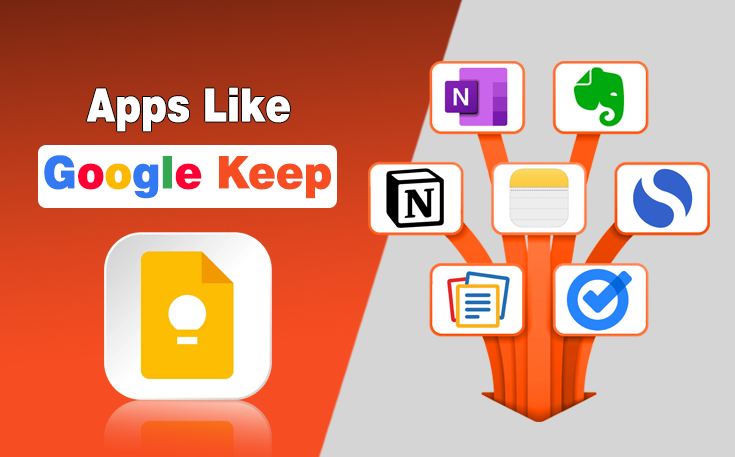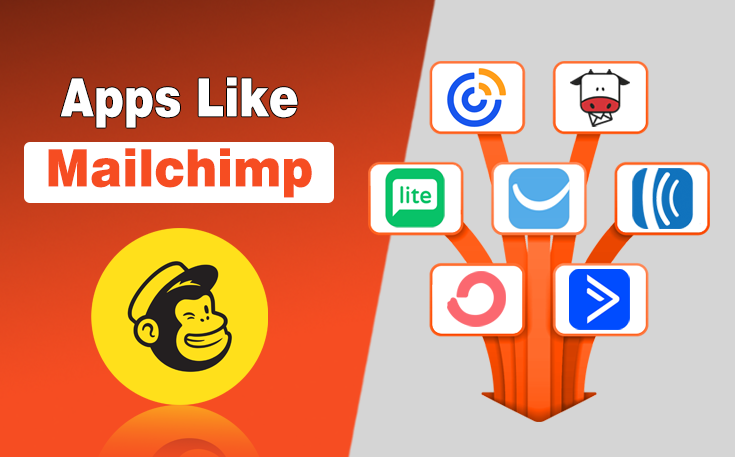So you’ve heard the term “content marketing” tossed around in meetings, newsletters, and podcasts!
Ever questioned! why some brands feel like trusted friends while others come off as just… ads? That’s content marketing at work, quietly building connections, inspiring loyalty, and delivering value without shouting “Buy now!”
More than just a trend, content marketing builds authority, educates your audience, and drives long-term growth. In fact, 72% of marketers say it delivers better ROI than traditional ads.
It’s no longer optional. Today, content marketing is your digital handshake, your brand’s voice, and your strongest competitive edge. The most successful businesses aren’t just selling; they’re teaching, storytelling, and building loyal communities.
In this complete guide, I will tell you about content marketing, how it works, why it is important, the types, and examples.
Stay connected! Keep Reading!
What is Content Marketing?
Content marketing is a strategic marketing approach focused on creating, publishing, and distributing valuable, relevant, and consistent content to attract and retain a clearly defined audience.
The ultimate goal is to generate profitable customer actions, such as purchases, subscriptions, or brand loyalty. Unlike traditional advertising that directly promotes products or services, content marketing aims to provide information, education, or entertainment to meet the audience’s needs.
Why Content Marketing is Important
Content marketing is not just important, it’s essential. Why? Because people no longer want to be sold to, they want to be informed, educated, and empowered—often with the support of business coaching services to help align content strategy with overall business goals.
Here is why content marketing is important:
1. It Builds Trust and Authority
People buy from brands they trust. If you consistently deliver helpful, relevant content such as blog posts, videos, and guides, you can position your business as an expert in your field. Over time, this trust turns into customer loyalty and higher conversion rates.
💡<em>Fact:</em>
70% of consumers prefer getting to know a company through articles rather than ads.
2. It Improves SEO and Organic Visibility
Content marketing fuels your search engine optimization efforts. Every blog post, video, or resource you publish gives you a chance to rank in search results, bringing free, long-term traffic to your website. The more quality content you create, the more keywords you target, and the easier it is for people to find you online.
Businesses that blog regularly get 434% more indexed pages and 97% more inbound links (HubSpot).
3. It Supports Every Stage of the Buyer’s Journey
From awareness to consideration to decision, content helps guide your audience step by step. At the top of the funnel, you might offer educational content. In the middle, detailed comparisons or case studies. At the bottom, persuasive testimonials or product demos. Content keeps your brand relevant throughout the entire decision-making process.
4. It Drives Higher ROI Than Traditional Advertising
Traditional ads stop delivering value the moment you stop paying for them. Content, on the other hand, keeps working for you over time. A well-ranking blog post or evergreen video can generate traffic, leads, and sales for months or even years after it’s published, without extra cost.
<mark style="background-color:#f2f2f2" class="has-inline-color has-vivid-cyan-blue-color">❝</mark>
Content marketing costs 62% less than outbound marketing and generates about 3 times as many leads.
5. It Builds Brand Awareness and Loyalty
When people consistently see your brand offering insight, solutions, or entertainment, they begin to remember and rely on you. Great content creates a deeper connection with your audience. Over time, this connection builds brand loyalty, word-of-mouth referrals, and customer advocacy.
How Content Marketing Works?
Content marketing works by attracting, engaging, and converting your target audience through valuable, relevant, and consistent content, without directly selling to them.
Here’s how the process typically flows:

1. Create Valuable, Relevant Content
Once you know your audience, you create content that helps, informs, or entertains them. This could be blog posts, videos, podcasts, social media content, infographics, or eBooks. The goal is to offer value, not pitch your product. Over time, this builds trust and authority, positioning your brand as the go-to resource.
2. Distribute the Content Strategically
Creating great content isn’t enough, you need to get it in front of the right people. This includes SEO (so it ranks on Google), email marketing, social media distribution, paid promotions, or guest posting. The goal is to meet your audience where they are already spending time.
3. Engage and Build Relationships
Content marketing is a two-way street. Encourage engagement through comments, shares, and feedback. When your audience interacts with your content, respond and build community. This human connection strengthens your brand and fosters loyalty.
4. Convert Leads into Customers
As your audience starts to trust your brand, they move closer to a buying decision. Content like product comparisons, case studies, testimonials, and FAQs can help convert interest into action. At this stage, content supports the buyer’s journey and leads to sales organically.
What are the Types of Content Marketing
Here are the types of content marketing for businesses and marketers to achieve marketing goals.
1. Blog Content Marketing
Blogs are the foundation of most content marketing strategies and for good reason. Companies that blog get 55% more website visitors and 67% more leads than those that don’t.
A well-written blog not only boosts your SEO but also establishes your authority in the industry. It’s where you answer your audience’s questions, share insights, and deliver long-form value. Over time, consistently valuable blog content builds trust, increases site engagement, and drives organic traffic that converts.
2. Social Media Content Marketing
With over 5.31 billion social media users globally (DataReportal, 2025), platforms like Instagram, LinkedIn, TikTok, and X (formerly Twitter) are important marketing platforms. Social media content marketing helps you to engage directly with their audience through short-form content, visuals, stories, and real-time updates.
It’s not just about going viral; it’s about creating meaningful interactions, showcasing brand personality, and encouraging community-driven growth. If you do it right, social media drives awareness, fuels brand loyalty, and supports lead generation across all stages of the funnel.
3. Video Content Marketing
Video is now the most powerful form of content marketing today. In fact, 91% of consumers say they want to see more online video content from brands (WebFX). Whether it’s explainer videos, tutorials, product demos, or behind-the-scenes storytelling, video content increases engagement, boosts conversions, and improves retention.
YouTube, Instagram Reels, TikTok, and Facebook Watch offer brands high-visibility platforms to build emotional connections and deliver information in an easily digestible format.
4. Infographic Content Marketing
People process visuals 60,000 times faster than text (3M Corporation), which explains why infographics perform so well. Infographics allow you to simplify complex information and present it in a visually compelling, shareable format.
If you visualize industry trends, explain a process, or compare data, infographics enhance clarity and comprehension. They’re perfect for bloggers, email marketing, and social media, anywhere quick impact and high engagement are essential.
You may also like the related article: Tips to Make Your Infographics Stand Out
5. Email Content Marketing
Email continues to be one of the highest-ROI marketing channels, delivering an average return of $36 for every $1 spent. With a properly segmented list and personalized messaging, you can nurture leads, promote products, and build long-term customer relationships.
You can keep your brand or business in front of your audience if you send a monthly newsletter, drip campaign or a product update. It will also make your customers repetitive and loyal ones.
6. Podcast Content Marketing
Podcasting has exploded in popularity, with over 584 million global listeners expected by the end of 2025 (Statista). This audio format offers a unique opportunity to build long-form, trust-based relationships with your audience.
Unlike video or written content, podcasts are consumed on the go while commuting, working out, or doing chores. Businesses use them to discuss industry trends, interview thought leaders, and share brand values in a more human, conversational way. It’s content that connects voice to ear, thought to action.
7. eBooks & Whitepapers
For brands looking to position themselves as experts, eBooks and whitepapers are invaluable. These long-form formats allow deep dives into specific topics, offering advanced insights and solutions.
They’re also excellent lead-generation tools: 78% of B2B buyers use whitepapers to make purchasing decisions. With this content form, companies collect valuable contact information while delivering high-value resources. It is ideal for industries like finance, tech, and consulting, as this content builds authority and nurtures high-intent leads.
8. User-Generated Content (UGC)
UGC is a powerful form of social proof, and it works. According to Nielsen, 92% of consumers trust UGC more than traditional advertising. When your customers create content featuring your product photos, videos, and reviews, it sends a clear message to prospects: this brand delivers.
UGC not only increases credibility and engagement but also reduces your content production load. Brands can encourage it through hashtags, contests, and product shout-outs, then reshare it to amplify authenticity and community.
Why Do You Need to Use Content Marketing?
Content marketing is no longer just a trend, it’s a necessity for any brand that wants to grow in a competitive digital landscape.
1. Your Customers Are Searching for Answers
People turn to Google, YouTube, and social media for solutions to everyday problems. If your content shows up with the right answer at the right time, you’ve just made a powerful first impression. Content meets your audience where they are, guiding them toward your brand organically.
2. It Builds Long-Term Relationships (Not Just Quick Wins)
Advertising may earn clicks, but content earns trust. By consistently offering valuable insights—through blog posts, videos, guides, or social media you stay top-of-mind with your audience. This long-term trust results in higher customer lifetime value, loyalty, and referrals.
3. It’s Cost-Effective and Scalable
Compared to traditional advertising, content marketing is remarkably cost-efficient. Once published, a high-performing piece of content can continue to drive traffic and leads for months or even years. It’s a long-term investment that scales with your business.
4. It Supports Every Marketing Channel
Great content fuels everything from your SEO and social media to email campaigns and paid ads. Blog posts can become newsletters. A webinar can turn into short videos. A single piece of content can be repurposed across multiple channels, multiplying its value and reach.
5. Your Competitors Are Already Doing It
If you’re not using content marketing, chances are your competitors are and they’re gaining visibility, traffic, and trust while you’re missing out. To stay relevant and competitive, you need to show up with content that proves your value and sets you apart.
Key Elements of a Successful Content Marketing Strategy
Here are the key elements that you can use to create a successful content marketing strategy.
1. Clear Goals and Objectives
First of all, you can define what you want your content marketing to achieve. Is it brand awareness? Lead generation? Customer retention? SEO growth? Having SMART goals (Specific, Measurable, Achievable, Relevant, and Time-bound) gives your content a clear purpose and keeps your team focused.
2. Deep Audience Understanding (Buyer Personas)
Your content must speak directly to your ideal customers. Create detailed buyer personas based on real data, and cover demographics, behaviors, challenges, goals, and content preferences. The better you know your audience, the more relevant and engaging your content will be.
3. Strong Brand Messaging and Voice
Consistency matters. Develop a clear brand voice and messaging framework that reflects your company’s values and resonates with your audience. Whether your tone is professional, playful, or inspirational, it should be uniform across all content channels.
4. Content Planning and Editorial Calendar
A content marketing strategy without a plan is like sailing without a map. Use a content calendar to organize what you’ll publish, when, and where. This keeps your team aligned, helps balance formats and topics, and ensures you’re delivering consistent value.
5. SEO and Keyword Strategy
To be found, your content must be optimized. Conduct keyword research to identify what your audience is searching for, and build your content around those queries. Include SEO best practices like optimized headlines, meta descriptions, internal linking, and structured formatting.
Companies that prioritize blogging are 13x more likely to see a positive ROI
6. Multi-Channel Content Distribution
Creating content is just step one distributing it effectively is where the impact happens. Use the right mix of channels based on your audience: social media, email newsletters, search engines, YouTube, or even third-party partnerships. Make sure your content meets for each platform to maximize reach and engagement.
7. Content Formats and Variety
Don’t rely on just one format. Mix it up with blog posts, infographics, videos, podcasts, case studies, eBooks, and social content. These different formats keep your audience engaged and helps you connect with different learning styles and attention spans.
8. Performance Measurement and Analytics
You can’t improve what you don’t measure. Track metrics like website traffic, conversion rates, engagement, bounce rate, and ROI. Use analytics tools like Google Analytics, SEMrush, or HubSpot to see what’s working and optimize based on the data.
9. Content Repurposing Strategy
Maximize the life and value of your content by repurposing it. Turn a blog post into a video, a podcast into social clips, or an infographic into a carousel. Repurposing helps you extend reach, reinforce messaging, and save production time.
10. Team Collaboration and Workflow
Content marketing often involves writers, designers, SEO specialists, and social media managers. Define clear roles, approval processes, and collaboration tools (like Trello, Notion, or Asana) to ensure a smooth content creation workflow.
Content Marketing vs. Paid Advertising (PPC)
Paid ads offer fast results, but content marketing offers long-term, trust-based growth. Here is a table that provides a quick comparison between content marketing and Paid Advertising.
| Aspect | Content Marketing | Paid Advertising (PPC) |
| Approach | Long-term, value-driven | Short-term, attention-driven |
| Cost | Lower cost over time | Continuous spend required |
| Lifespan | Evergreen (can perform for years) | Ends when the budget runs out |
| Trust Factor | Builds trust gradually | Seen as promotional or interruptive |
| ROI | Compounds over time | Immediate but often short-lived |
Real-Life Examples of Effective Content Marketing
Here are some content marketing examples of brands that are famous around the world. They have used effective content marketing and understand their customers’ behaviours by the passage of time, as a result, they are leading now.
Lets have a look:
1. HubSpot – Educational Blogging and Free Tools
HubSpot built a massive library of blog posts, tutorials, templates, and free tools like website graders and CRM platforms.
Why it worked: Their content is deeply informative, SEO-optimized, and answers real business questions. As a result, they’ve become a trusted source for marketing, sales, and CRM solutions.
Result: HubSpot generates thousands of leads each month from their blog alone, helping them grow into a $20B+ SaaS giant.
2. Red Bull – Branded Media Empire
Instead of pushing energy drinks, Red Bull created a media company around extreme sports and adrenaline-fueled adventures through videos, magazines, and events.
Why it worked: Their content doesn’t sell a product, it sells a lifestyle. Red Bull became synonymous with high-energy action and performance.
Result: Red Bull’s YouTube channel has over 23.6 million subscribers, and their media arm rivals traditional broadcasters.
3. Coca-Cola – “Share a Coke” Campaign
Coca-Cola personalized bottles with names and encouraged people to find and share their bottle on social media.
Why it worked: This user-generated content campaign connected emotionally with customers and drove massive engagement, both online and offline.
Result: Over 500,000 photos were shared with the #ShareACoke hashtag, and sales rose by 2% in the U.S., a significant boost for a legacy brand.
4. GoPro – User-Generated Video Content
GoPro encouraged customers to share their own action-packed videos using GoPro cameras, often featuring them in official marketing.
Why it worked: UGC added authenticity and showed the product in action. It also built a passionate community of brand advocates.
Result: GoPro’s YouTube channel has over 11 million subscribers, and some individual user videos have gone viral, reaching millions of views.
5. Spotify – “Wrapped” Personalized Content
Every year, Spotify releases “Spotify Wrapped,” which gives users a personalized recap of their listening habits—and encourages them to share it.
Why it worked: It’s personal, interactive, highly shareable, and turns every listener into a brand promoter.
Result: In 2023, Spotify Wrapped was mentioned over 60 million times on social media, with massive user engagement and virality.
6. Airbnb – Storytelling Through Local Hosts
Airbnb shares stories from its hosts and travelers around the world, spotlighting unique stays and local experiences.
Why it worked: The content builds trust and highlights the emotional side of travel making customers feel part of a global community.
Result: Airbnb’s blog and YouTube content helped drive brand loyalty, attract new hosts, and increase bookings post-pandemic.
You may also like to read: Best Apps Like Airbnb – Top Alternatives
7. Moz – The “Whiteboard Friday” Series
Moz created a weekly video series called “Whiteboard Friday,” where SEO experts explain complex topics in a simple, visual way.
Why it worked: It’s consistent, highly educational, and positions Moz as an authority in the SEO space.
Result: Moz became one of the most respected brands in SEO, and their videos consistently get thousands of views and backlinks.
Future Trends in Content Marketing
The future of content marketing is changing with the change of search engines.
1. AI-Driven Content Creation & Personalization
Artificial intelligence is transforming how content is created, personalized, and distributed. AI tools can now generate outlines, blog posts, emails, video scripts even entire campaigns.
- What’s next? Hyper-personalized content powered by AI will become standard. Content will be tailored not just by name, but by behavior, intent, and user journey.
- How to adapt: Use AI to scale content, but blend it with human creativity for authenticity and emotional resonance.
2. Search Shifts: Zero-Click & Voice Search Optimization
Traditional search is changing. With the rise of featured snippets, AI summaries (like Google SGE), and voice assistants, users are increasingly consuming information without clicking.
- What’s next? Content must be optimized for visibility at the top of the SERP, voice queries, and conversational AI.
- How to adapt: Focus on clear, concise, well-structured answers. Use FAQ sections, schema markup, and conversational language.
Over 58% of consumers already use voice search to find local business information (Think with Google).
3. Video & Short-Form Content Domination
Video continues to outperform all other formats, and short-form video (under 60 seconds) is leading the charge thanks to platforms like TikTok, YouTube Shorts, and Instagram Reels.
- What’s next? Snackable video content will dominate B2C and start gaining serious traction in B2B marketing.
- How to adapt: Invest in micro-video content that is mobile-optimized, authentic, and story-driven. Don’t overlook educational or behind-the-scenes formats.
4. Content Experience > Just Content
It’s not just about what you say it’s about how people experience it. Brands are moving toward interactive, immersive, and UX-optimized content that keeps users engaged.
- What’s next? Content design will merge with web experience. Interactive quizzes, calculators, 3D product demos, and even AR content will rise.
- How to adapt: Create content that’s visual, interactive, and easy to consume across devices.
5. User-Generated Content (UGC) as Social Proof
Trust in brand messaging is declining. Consumers now rely on peers, reviews, and community-driven content.
- What’s next? UGC will become a core part of brand strategy, especially in eCommerce, travel, and lifestyle sectors.
- How to adapt: Encourage customers to create and share content through hashtags, testimonials, and community features. Repost and highlight UGC in your campaigns.
6. Content for Communities, Not Just Customers
Instead of chasing viral reach, brands are shifting toward building communities around shared values, interests, and goals.
- What’s next? Private communities (like Discord, Slack groups, and niche forums) will become key engagement hubs.
- How to adapt: Create content that sparks discussion and builds identity—then nurture those communities with exclusive insights, live sessions, and value-based interactions.
7. Sustainability and Purpose-Driven Content
Modern consumers care deeply about values, transparency, and sustainability. Brands that take a stand and communicate their mission through content will earn trust and loyalty.
- What’s next? Purpose-led storytelling will become essential—especially among Gen Z and millennials.
- How to adapt: Be authentic. Share your sustainability efforts, social impact stories, and values-driven initiatives through blogs, video, and social platforms.
8. Content Performance = Data + Creativity
Data is no longer just a reporting tool—it’s guiding creative decisions. High-performing content strategies are now driven by real-time insights, A/B testing, and predictive analytics.
- What’s next? Real-time content optimization will be expected. Marketers will use performance data to update and personalize content continuously.
- How to adapt: Use analytics tools to test headlines, track conversions, measure scroll depth, and optimize formats in real time.
Sum Up…
Well, all these details are about what is content marketing. Content marketing approaches are changing with the changing users’ behaviour and search engine results. As a marketer or business person, you have to be updated with strategies and user behaviours to create content that directly addresses the audience.
The future of content marketing lies in creating human, helpful, and highly personalized experiences at scale. While AI and automation will power the engine, creativity, empathy, and purpose will remain at the heart of what makes content truly connect.
Need custom app with amazing features?
Get a Quote




